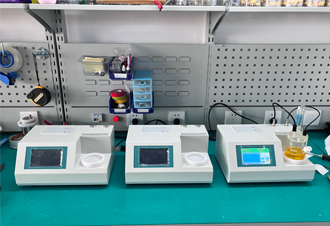 English
English



-
 Afrikaans
Afrikaans -
 Albanian
Albanian -
 Amharic
Amharic -
 Arabic
Arabic -
 Armenian
Armenian -
 Azerbaijani
Azerbaijani -
 Basque
Basque -
 Belarusian
Belarusian -
 Bengali
Bengali -
 Bosnian
Bosnian -
 Bulgarian
Bulgarian -
 Catalan
Catalan -
 Cebuano
Cebuano -
 China
China -
 China (Taiwan)
China (Taiwan) -
 Corsican
Corsican -
 Croatian
Croatian -
 Czech
Czech -
 Danish
Danish -
 Dutch
Dutch -
 English
English -
 Esperanto
Esperanto -
 Estonian
Estonian -
 Finnish
Finnish -
 French
French -
 Frisian
Frisian -
 Galician
Galician -
 Georgian
Georgian -
 German
German -
 Greek
Greek -
 Gujarati
Gujarati -
 Haitian Creole
Haitian Creole -
 hausa
hausa -
 hawaiian
hawaiian -
 Hebrew
Hebrew -
 Hindi
Hindi -
 Miao
Miao -
 Hungarian
Hungarian -
 Icelandic
Icelandic -
 igbo
igbo -
 Indonesian
Indonesian -
 irish
irish -
 Italian
Italian -
 Japanese
Japanese -
 Javanese
Javanese -
 Kannada
Kannada -
 kazakh
kazakh -
 Khmer
Khmer -
 Rwandese
Rwandese -
 Korean
Korean -
 Kurdish
Kurdish -
 Kyrgyz
Kyrgyz -
 Lao
Lao -
 Latin
Latin -
 Latvian
Latvian -
 Lithuanian
Lithuanian -
 Luxembourgish
Luxembourgish -
 Macedonian
Macedonian -
 Malgashi
Malgashi -
 Malay
Malay -
 Malayalam
Malayalam -
 Maltese
Maltese -
 Maori
Maori -
 Marathi
Marathi -
 Mongolian
Mongolian -
 Myanmar
Myanmar -
 Nepali
Nepali -
 Norwegian
Norwegian -
 Norwegian
Norwegian -
 Occitan
Occitan -
 Pashto
Pashto -
 Persian
Persian -
 Polish
Polish -
 Portuguese
Portuguese -
 Punjabi
Punjabi -
 Romanian
Romanian -
 Russian
Russian -
 Samoan
Samoan -
 Scottish Gaelic
Scottish Gaelic -
 Serbian
Serbian -
 Sesotho
Sesotho -
 Shona
Shona -
 Sindhi
Sindhi -
 Sinhala
Sinhala -
 Slovak
Slovak -
 Slovenian
Slovenian -
 Somali
Somali -
 Spanish
Spanish -
 Sundanese
Sundanese -
 Swahili
Swahili -
 Swedish
Swedish -
 Tagalog
Tagalog -
 Tajik
Tajik -
 Tamil
Tamil -
 Tatar
Tatar -
 Telugu
Telugu -
 Thai
Thai -
 Turkish
Turkish -
 Turkmen
Turkmen -
 Ukrainian
Ukrainian -
 Urdu
Urdu -
 Uighur
Uighur -
 Uzbek
Uzbek -
 Vietnamese
Vietnamese -
 Welsh
Welsh -
 Bantu
Bantu -
 Yiddish
Yiddish -
 Yoruba
Yoruba -
 Zulu
Zulu
tangent delta test transformer
Understanding Tangent Delta Test Transformers A Key to Insulation Condition Assessment
Tangent Delta (TD) testing is a fundamental diagnostic method used to evaluate the insulation of electrical equipment, particularly transformers. In the realm of power engineering, the integrity of insulation systems is paramount, as they play a critical role in preventing electrical failures, which can lead to significant operational, safety, and financial ramifications. This article delves into the importance of tangent delta test transformers and how this testing method helps in assessing the condition of insulation materials.
The Principle of Tangent Delta Testing
The tangent delta is defined as the ratio of the resistive (dissipation) current to the capacitive (reactive) current in an insulation system when subjected to an AC voltage. This parameter provides insights into the dielectric properties of insulation materials. The tangent delta (often abbreviated as TD or tan δ) indicates the energy loss in the insulation due to its imperfections and potential moisture absorption.
In practical terms, tangent delta testing involves applying an alternating current to the transformer and measuring the phase angle difference between the current and the voltage. A higher tangent delta indicates increased dielectric losses, suggesting aging, moisture ingress, or contamination in the insulation system.
Importance of Tangent Delta Testing in Transformers
Transformers are crucial components in electrical distribution systems, converting voltage levels and ensuring efficient energy transfer. The reliability of a transformer significantly depends on the condition of its insulation. Periodic tangent delta testing serves several important functions
1. Condition Monitoring Regular TD testing allows operators to monitor the health of the insulation over time. By establishing baseline values, any deviations can prompt further investigation, helping to identify issues before they escalate into catastrophic failures.
2. Predictive Maintenance By analyzing the trends in tangent delta readings, maintenance can be scheduled based on the actual condition of the transformer rather than fixed intervals. This predictive approach improves the cost-effectiveness of maintenance strategies and minimizes unscheduled outages.
3. Risk Mitigation Understanding the insulation status helps in risk management. Transformers with deteriorating insulation can pose safety hazards, including fire risks and equipment failures. Early detection through TD testing enables timely intervention.
tangent delta test transformer

4. Compliance and Standards Many regulatory bodies and industry standards advocate for routine insulation testing to ensure safety and reliability. Tangent delta testing aligns with these requirements, providing documented evidence of maintenance practices.
Implementing Tangent Delta Testing
The implementation of tangent delta testing in transformers involves several key steps
- Preparation Isolate the transformer from the system to ensure safety and accuracy during testing. Follow all necessary lockout/tagout procedures.
- Test Setup Connect the testing equipment to the transformer, ensuring appropriate voltage levels are applied per manufacturer specifications.
- Data Collection Perform the measurements, ensuring to take note of ambient conditions, as temperature and humidity can impact readings.
- Analysis Compare the results against baseline data and industry standards. A systematic approach to analyzing trends over time is essential for effective condition monitoring.
- Reporting Document the findings and recommend subsequent actions, whether it be further testing, maintenance, or immediate repairs.
Conclusion
Tangent delta testing is an invaluable tool in the management of transformer insulation, providing insights that enhance safety and reliability in electrical systems. By regularly assessing insulation conditions, operators can detect issues early, optimize maintenance schedules, and extend the lifespan of transformers. In an industry where the cost of failure can be exceedingly high, investing in such diagnostic practices is not only prudent but essential for ensuring the seamless operation of critical electrical infrastructure.
-
Exploring the Main Types of Industrial Endoscopes and Their Applications Across IndustriesNewsJul.04,2025
-
Testing Equipment Industry Sees Major Advancements in 2025: Smart & Precision Technologies Lead the WayNewsJun.06,2025
-
Applications of Direct Current Generators in Renewable Energy SystemsNewsJun.05,2025
-
Hipot Tester Calibration and Accuracy GuidelinesNewsJun.05,2025
-
Digital Circuit Breaker Analyzer Features and BenefitsNewsJun.05,2025
-
Benefits of Real-Time Power Quality Monitoring Devices for Industrial EfficiencyNewsJun.05,2025



